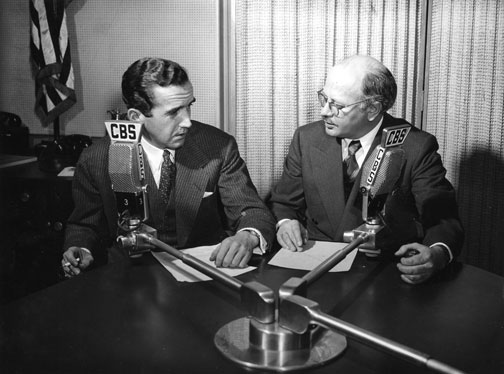When a major computer company recently used the song “Let Me Entertain You,” from the play Gypsy, to sell tablet computers, I initially dismissed this as a typical weak choice. That is, until I heard two teenagers at a play rehearsal trading licks from the song in the exact style TV star Lea Michele uses in the commercial. Because advertising is pervasive in our culture, a commercial can influence how we perceive a song.
“Let Me Entertain You” is Gypsy’s unifying theme, linking young Rose Louise Hovick’s progression from a young vaudeville performer under her mother’s thumb, to her adult role as burlesque dancer Gypsy Rose Lee. Noted for her intellectual style and witty delivery, Gypsy Rose Lee innovated striptease, smartening the tone and pushing it to an art. But that doesn’t change the fact that she took her clothes off for money.
Musical theatre often appears intellectually lightweight because of how it gets manhandled in community and youth theatre productions. Many people never see musical theatre except in sanitized versions that pull out the shows’ teeth to satisfy our society’s desire to protect and coddle children. Because more ambitious shows run up more ambitious budgets, many working-class people never see the potential theatre contains.
A production of Oklahoma I appeared in glossed over themes of territorial ambition, relationship violence, and the anger sublimated in prairie life. I’ve watched productions of Dracula that elided both sex and horror. Few productions of Grease deal forthrightly with the show’s themes of gang violence, sexual exploration, and class conflict. Why do we castrate smart, ambitious shows this way?
Because of its fringe placement, theatre has the liberty to address themes and issues that more mass media shy away from. Finian’s Rainbow, which deals with racial prejudice in the American South, was not made into a film until that prejudice was largely controlled and abated, despite the play’s phenomenal success. Hollywood could have made stacks of money off such a film, but was too risk averse to actually take on the themes.
Advertising pushes that same inclination to truly bizarre lengths. Though TV ads do not manufacture the exclusively Caucasian environment they showed just a few years ago, they remain a world still remarkably free of conflict, controversy, or struggle. That includes poverty: working-class people who watch TV recreationally can be forgiven for thinking their plight is less common than it is, and blaming themselves.
I can’t pretend this is inexplicable. A realistic look at race, economics, and politics would make people feel anxious, which makes people hold onto their wallets. Since advertisers want to part viewers from their money, we can’t get too angry at them for doing their jobs. A pretty actress singing show tunes probably moves far more product than a frank evaluation of life’s hardships.
Lea Michele’s “Let Me Entertain You” ad emphasizes the singer’s physical beauty, amplifying it by holding her head still behind a computer screen while her hips and torso sway in a sparkly dress. It makes an interesting contrast to her character on Glee, notable for her artistic flair but social awkwardness. This ad turns Michele into a sex symbol, which is weird, considering how it smooths the edges of the song.
Gypsy first appeared with the subtitle “A Musical Fable,” because that’s exactly what it was. Though generally positive in its attitude toward the title character, it also describes the arc of descent as Rose Louise transforms from a wide-eyed child star to an aggressive, career-driven stripper. “Let Me Entertain You” embodies the movement as Gypsy turns her body into a commodity.
I really fear those two teenagers will not understand what that song means. I fear they will think it only refers to the entertainment capabilities of a computer, and that they will proceed into the world unaware of the possibility that life could blindside them. We need to stop sanding the edges off our lives, because we owe it to those coming after us to face life forthrightly.







 Sure, America may have the oldest Constitution on Earth, but I say she’s young. Those other countries may have had a bunch of work, claiming that they’re a new and different Germany, but that dusty bitch is just a fresh new dress on the same old Holy Roman Empire. And I don’t care that Japan’s legislature is less than half as old as America’s, because if you’re old enough to have an emperor, you’re old.
Sure, America may have the oldest Constitution on Earth, but I say she’s young. Those other countries may have had a bunch of work, claiming that they’re a new and different Germany, but that dusty bitch is just a fresh new dress on the same old Holy Roman Empire. And I don’t care that Japan’s legislature is less than half as old as America’s, because if you’re old enough to have an emperor, you’re old.















